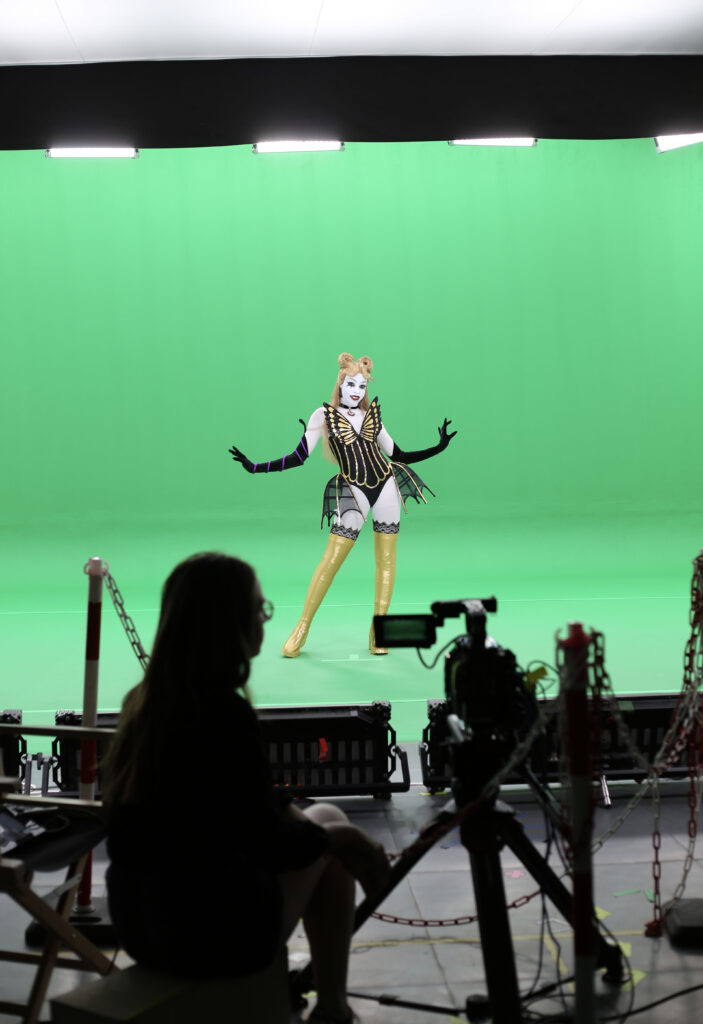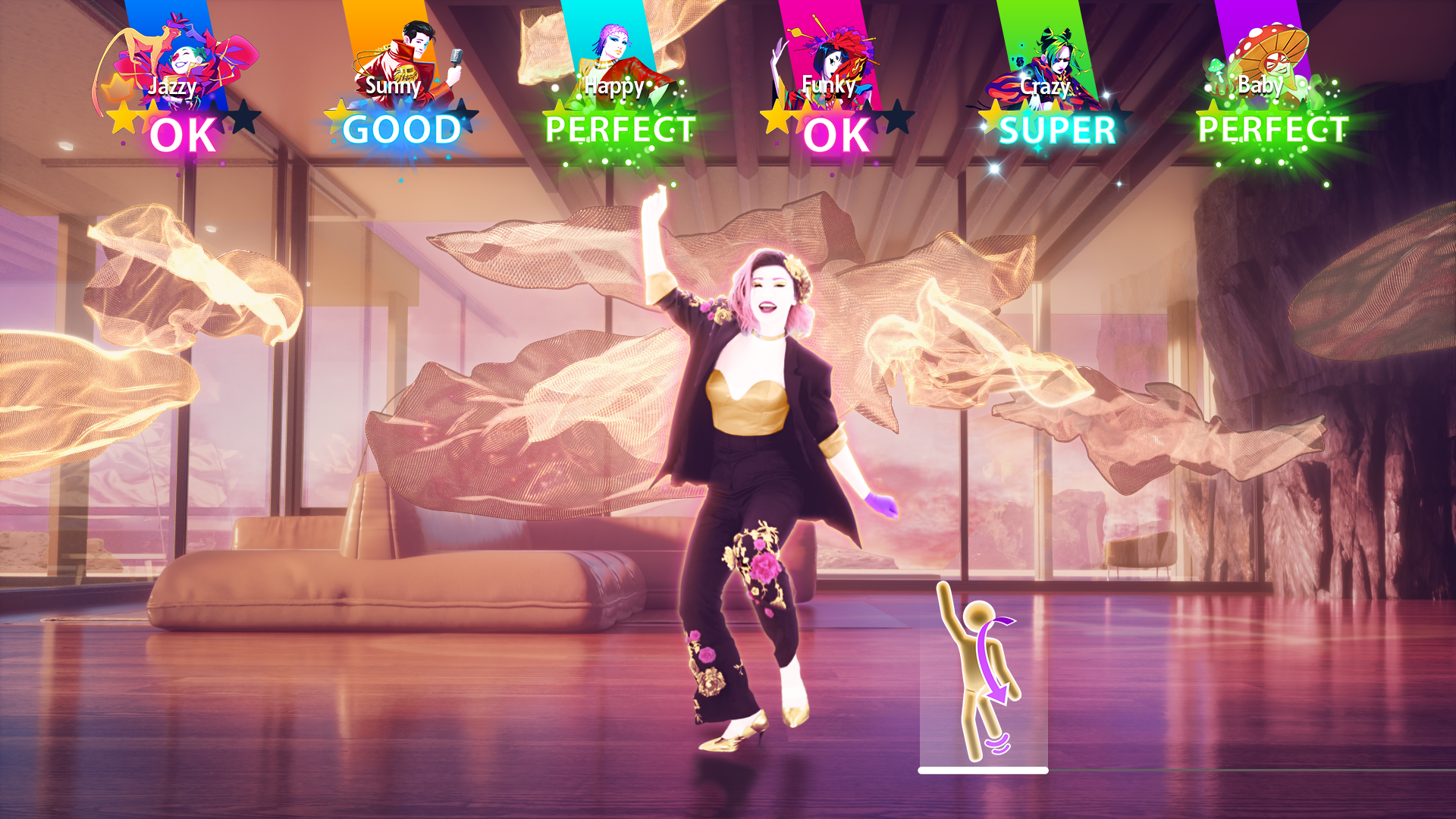Real Dancers, Really Dancing: The Making of Just Dance 2024
When you imagine a video game studio, you probably think of rows of programmers at rows of computers and a fleet of gaming consoles, rather than mirrored dance studios. But at Ubisoft Paris, there are both: The Paris branch of the video game company leads the creation and development of Just Dance, a game in which players are scored for how precisely and musically they can reproduce choreography to popular songs.
Originally published in 2009 for the Nintendo Wii console, Just Dance has since sold 80 million copies and engaged more than 140 million players all over the world. And while the game, which released its 2024 edition at the end of October, aims to make dance fun and accessible for anyone who picks up a remote, there are dozens of professional dancers and choreographers who help to make it happen.
Real Dancers, Really Dancing

For every Just Dance song and its attendant choreography, players follow along with at least one “coach,” digital avatars with unique character design. You might assume these coaches are computer generated, but the routines that unfold in each Just Dance “map” start out as videos of dancers performing the choreography in full costume and makeup on a green screen. Though animation is added in postproduction, what you’re watching in the final game are real dancers, really dancing. The 2024 edition worked with 38 dancers and 17 choreographers, 7 of whom performed their own routines as coaches, to create the 40 new maps.
Finding the Right Choreographer
Estelle Manas, Just Dance’s director of choreography, began working at Ubisoft four years ago after over 20 years as a professional dancer in France’s commercial and musical theater scenes. She’s one of the creative leads involved in the process of creating each map from inception. “My role is to make the bridge between all the production needs and the artists,” she says.
Once the number of characters, mood, and story for a given song are determined, Manas puts together a brief with that information, as well as the planned difficulty (easy, medium, hard, or extreme), whether there are any accessories or props to be integrated, and an initial storyboard breakdown with the music. She then references Just Dance’s go-to list of freelance choreographers and finds the best fit. The selected choreographer goes into the studio with Manas and her assistant to create and film a prototype of the choreography.
Unique Choreographic Constraints
The choreography for a Just Dance map has to work within unique constraints. Because the console remote, which tracks the players’ movements to produce their final score, is held in the right hand, the choreography has to ensure that the right hand is always visible and actively involved in the dance. The movement has to be oriented to the front and be easily legible; keeping players facing the screen makes it easier for them to mirror the 2-D avatar’s moves, and makes for clearer pictograms, which scroll across the bottom of the screen in time with the choreography to cue players on which positions and motions are being scored for accuracy. Player ease is also why the choreography unfolds in relatively straightforward patterns: lots of repetition, fairly square musicality. Adjustments to accommodate the needs of other departments—from costume design to video artists to level design—also have to be seamlessly incorporated into the final version.

Casting “Coaches”
Just Dance has a roster of dancers primarily found through periodic open-call auditions. Manas and her team consider the style of dance and the personality and look of the “coach” when deciding who to tap. Across the board, the dancers have to be not just good, clean technicians but also excellent at emoting, projecting energy, and conveying a story in a three-minute routine. Most important to the rehearsal process: “We need the dancer to have a really good memory, because we change the steps, the energy, the eye contact, all the time,” Manas says. They have, at most, four three-hour rehearsals in which to master the choreography as it’s being workshopped to accommodate notes from other departments.
What’s New in 2024
One new feature that will be beta-tested this winter is camera scoring, which will allow players to set up their smartphone to track them as they perform the routines from 15 tracks and score them based on their full body movement, rather than tracking just the remote in their right hand. (This gets at an early criticism of Just Dance: Couldn’t you just sit on the couch and wave your right arm around, rather than attempting the choreography?) The grading for this mode is based on an artificial-intelligence model trained on team members performing the choreography.
Another first for the 2024 edition: Collaborating with Baroque-dance expert Pierre-François Dollé for a new map set at the Palace of Versailles. Brought about thanks to the Cultural Olympiad program ahead of the Paris 2024 Olympic Games, “A Night in the Château de Versailles” celebrates a location that looms large not just in the popular imagination (Marie Antoinette, anyone?) but also in the history of Western classical dance. (Remember Louis XIV and Ballet de la Nuit from dance history class?) When Manas interviewed Dollé at the start of the collaboration, she was surprised to learn that Baroque dances like the minuet were not unlike the Macarena or Cupid Shuffle of their time, albeit for courtiers: “It was a really fun and sharing space, like: ‘I’ve heard this song, I know this choreography, let’s go!’ ”
The final result, set to a remix integrating a pair of contemporaneous compositions, evolves from a fairly straightforward homage to paired Baroque dances into a syncopated, hip-hop–inspired riff on the genre as the onscreen coaches move through the grounds and halls of the opulent palace. And the new Versailles map is a tidy encapsulation of what Just Dance is all about: taking something that might seem elite and out of reach—a Baroque dance performed by aristocrats, or, more broadly, dance as an art form—and transforming it into a contemporary, accessible, fun experience.




